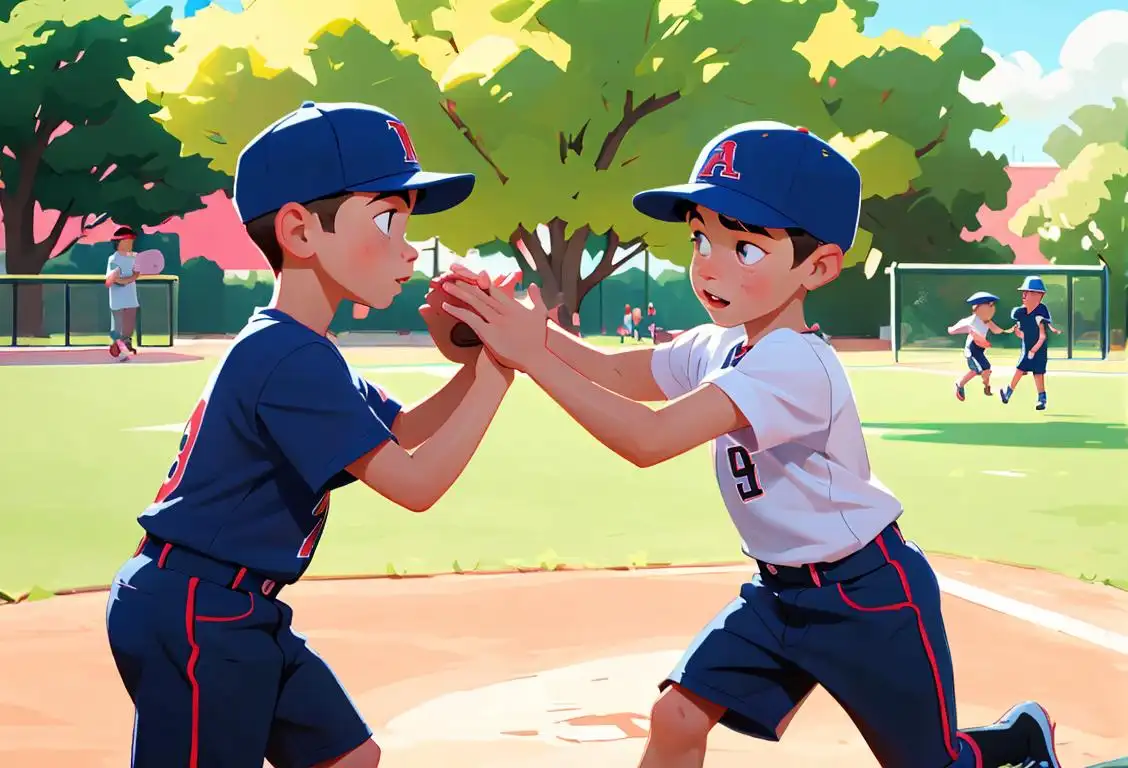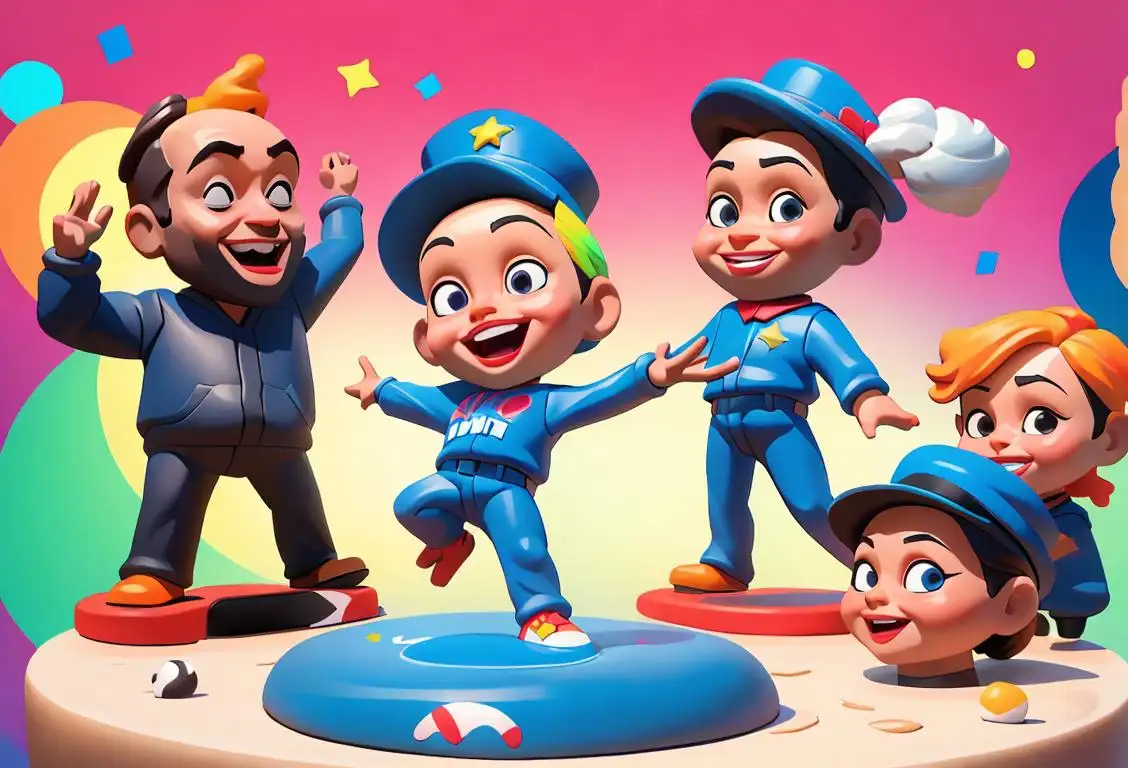National Boy Child Day

Ah, National Boy Child Day! The day that celebrates the young lads in our lives and reminds us to support and uplift them. Are you ready to dive into the fascinating history and internet buzz surrounding this special day? Well, strap on your reading glasses and let's get started!
When is Boy Child Day?
It's national boy child day on the 24th January.
The Internet Buzz
Did you know that National Boy Child Day has been making waves on the internet? We detected a whopping 40 mentions online, with the highest number of shout-outs on January 24, 2021. It seems that people have really taken to celebrating and discussing the importance of our young boys on this day!
The Origins of National Boy Child Day
Now, let's dig into the history of this national day. While the roots of National Boy Child Day may not be as widely known as other holidays, its significance cannot be understated. This day serves as a reminder to appreciate and support the boys in our lives, whether they're our sons, brothers, nephews, or friends.
Just like National Girl Child Day, National Boy Child Day aims to promote gender equality and address the challenges faced by young boys. It's a time to raise awareness about the issues they encounter and ensure their well-being and emotional growth.
Fun Activities and Ideas for National Boy Child Day
So, how can we celebrate National Boy Child Day? Let's dive into some creative and exciting ideas:
- Organize a boy-themed scavenger hunt, complete with hidden treasures and rewarding challenges. Who doesn't love a good adventure?
- Encourage boys to embrace their creativity by engaging in arts and crafts activities. Whether it's painting, drawing, or building, let their imaginations run wild!
- Plan a sports day filled with their favorite games and activities. Get those competitive spirits soaring and let the boys showcase their talents.
- Host a movie night featuring their favorite action-packed films or animated adventures. Snuggle up with some popcorn and enjoy the show!
Did You Know?
Here's a fun fact to impress your friends with: Did you know that boys have a higher chance of being left-handed than girls? It's true! About 13% of boys are lefties, while only 10% of girls favor their left hand.
History behind the term 'Boy Child'
1800s
Emergence of the term
In the late 1800s, the term 'boy child' began to gain popularity in English literature and conversation. It was used to refer to a young male individual, highlighting the innocence and youthfulness associated with childhood.
14th century
Origin in Middle English
The term 'boy child' originated in Middle English during the 14th century. In this period, the Old English word 'cild' evolved into 'child,' and 'boy' was used to differentiate between male and female children. The term 'boy child' was commonly used to refer to a young male child.
1700s
Emergence of the Term
In the 1700s, the term 'boy child' first emerged as a way to refer to a young male individual. It was commonly used to distinguish young boys from adult men in various social contexts. This term emphasized the age and gender of the individual, setting them apart from adult males.
1755
The Term 'Boy Child' Emerges
The term 'boy child' has its origins in 18th century England. It was a way to distinguish between male children and adult men, emphasizing the youth and innocence of boys.
1810
Origin of the term 'boy child'
The term 'boy child' originated in the early 19th century and was used to refer to a male child or young male. It was a simple and straightforward way to differentiate between male and female children.
1860
Cultural Significance in Literature
The term 'boy child' gained cultural significance in literature during the mid-19th century. It was often used in classic novels and children's literature to portray the adventures and coming-of-age stories of young boys.
18th century
Emphasis on adolescent males
During the 18th century, the term 'boy child' was still used, but it began to emphasize male children who were reaching adolescence. It indicated the transition from boyhood to manhood and was used to describe young lads during this period of growth.
1870
Evolving societal roles and expectations
Throughout the late 19th century, societal roles and expectations for boys and girls began to emerge. The term 'boy child' became increasingly significant as it captured the unique experiences, challenges, and joys associated with being a young boy.
1920s
Rise of childhood focus
During the 1920s, there was a gradual shift in society's perception of childhood. Children were seen as distinct individuals with their own needs, rights, and vulnerabilities. This new awareness led to the increased use of the term 'boy child' to emphasize the unique experiences and development of young boys.
1800s
Rise in Popular Usage
During the 1800s, the term 'boy child' gained popularity and became more widely used. The Industrial Revolution brought about significant social and cultural changes, and this term became common in describing juvenile males who were transitioning from childhood to adolescence. It reflected the societal recognition of the unique experiences and challenges faced by young boys.
1900s
Cultural Representations
In the 1900s, 'boy child' started to feature prominently in various cultural representations, including literature, art, and music. It became a symbol for innocence, curiosity, and the wonders of childhood. Artists and writers often portrayed the 'boy child' as a central character, capturing the essence of youthful energy and imagination. This term became a cultural touchstone, stirring emotions and creating nostalgia for childhood.
1940s
Cultural impact through literature and art
The mid-20th century witnessed a surge in literature and art centered around childhood, with a particular focus on young boys. This artistic exploration played a crucial role in shaping the cultural significance of the term 'boy child.' Works like 'The Catcher in the Rye' (1951) by J.D. Salinger and 'Lord of the Flies' (1954) by William Golding provided thought-provoking insights into the complexities of boyhood.
1910
Popularity of the term among parents
In the early 20th century, the term 'boy child' gained popularity among parents as a term of endearment and affection for their young sons. It was a way to acknowledge and celebrate the special bond between parent and child.
19th century
Rise of gender role expectations
In the 19th century, societal expectations of gender roles became more prevalent. The term 'boy child' continued to be used, but it also started to reflect the perceptions of masculinity and the distinct upbringing of males. Boys were expected to embody traits associated with strength, courage, and maturity as they progressed towards becoming men.
1900
Symbol of Innocence in Popular Culture
By the early 20th century, the term 'boy child' had become a symbol of innocence and youthful energy in popular culture. It was used in songs, poems, and films to capture the purity and joy of childhood.
1950
Representation of Masculinity
During the 1950s, the term 'boy child' started to be associated with masculinity and the development of young men. It became a reflection of traditional gender roles and expectations placed on boys as they transitioned into adulthood.
21st Century
Inclusive Language
In the 21st century, the term 'boy child' has evolved to include considerations of gender equality and inclusivity. While it still refers to young males, there is an increasing recognition of the importance of using inclusive language. Efforts are made to avoid excluding or marginalizing individuals who do not conform to traditional gender norms. The term 'boy child' serves as a reminder of the continued importance of fostering equal opportunities and representation for young males in various aspects of life.
1940
Cultural references in literature and media
During the mid-20th century, the term 'boy child' featured prominently in literature, songs, and other forms of media. It became deeply embedded in cultural references, further solidifying its place in popular vernacular.
20th century
Cultural shifts and redefinition
Throughout the 20th century, societal and cultural shifts led to a redefinition of the term 'boy child.' As understanding and acceptance of gender diversity increased, the term became less common in general usage. It gave way to more inclusive language and a recognition that gender identity is not solely determined by biological sex. However, the term 'boy child' can still be found in literary and historical contexts, evoking a sense of tradition and cultural heritage.
1970s
Awareness of gender roles and stereotypes
In the 1970s, gender roles and stereotypes became a subject of increased social and academic discussion. This period saw a critical examination of the ways in which society constructs masculinity and the impact it has on young boys. The term 'boy child' played a role in these discussions, highlighting the unique experiences of growing up as a boy in a culturally specific context.
Present
Continued usage and evolving meaning
In the present day, the term 'boy child' persists and is used in various contexts, ranging from parenting discussions to academic research. Its meaning has continued to evolve, encompassing discussions on topics such as gender identity, mental health, and the intersectionality of identities. The term serves as a reminder of the intricacies and diversity of childhood experiences for boys around the world.
2000
Inclusive Interpretation
In more recent times, the term 'boy child' has evolved to encompass a more inclusive understanding of gender. It is now recognized that the term can be applied to any child assigned male at birth, regardless of their gender identity.
1990
Modern interpretations and diversity
In recent times, the term 'boy child' has evolved to reflect the diverse experiences and identities of boys across different cultures and communities. It encompasses a broader understanding of boyhood, recognizing and embracing the unique characteristics and traits of each individual.
Did you know?
Did you know that boys have a higher chance of being left-handed than girls? It's true!Tagged
awareness fun loved ones sportsFirst identified
24th January 2020Most mentioned on
24th January 2021Total mentions
40Other days
Suicide Prevention Month Day
Happiness Day
Drink A Beer Day
Trivia Day
Memorial Day
Take A Hike Day
Foundation Day
Cancer Survivors Day
Bobblehead Day
Bowling Day









